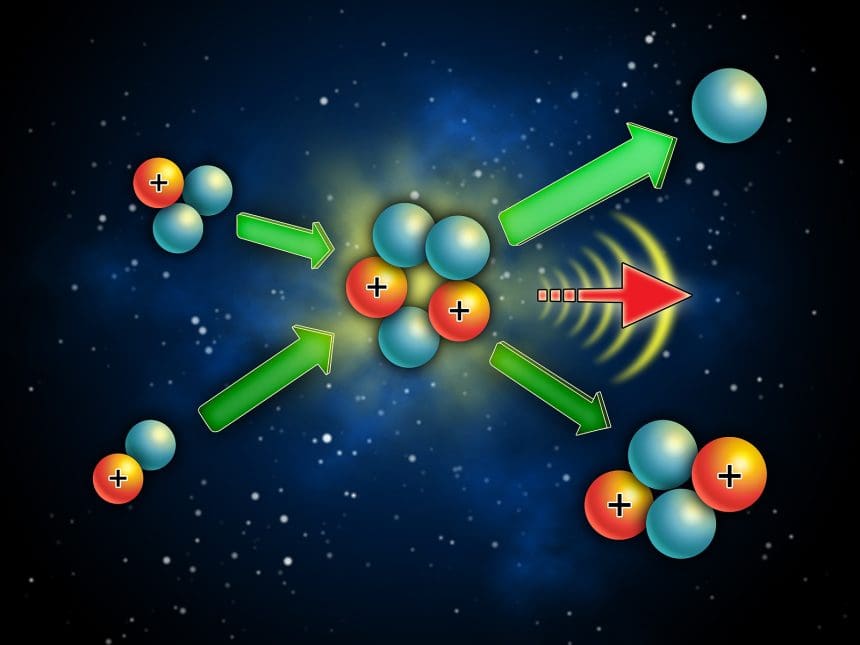When Will Nuclear Fusion Power Daily Life? Realistic Expectations for the Future of Clean Energy
ST. LOUIS, MO (STL.News) Nuclear Fusion — The promise of nuclear fusion — often referred to as the “holy grail” of energy — has fascinated scientists, engineers, and visionaries for decades. Touted as a source of nearly limitless, carbon-free, and safe power, fusion mimics the energy-generating process of the sun by fusing atomic nuclei instead of splitting them. The result: colossal energy output, no greenhouse gas emissions, and virtually no long-term radioactive waste.
But as awe-inspiring as the technology sounds, many people are left wondering: when will nuclear fusion actually power our homes, cities, and industries? Can we reasonably expect to see it in our daily lives, or is this another scientific dream that will remain perennially “30 years away”?
Let’s explore the current state of fusion energy, the road to commercialization, and what a realistic timeline looks like for its impact on everyday life.
The Science Behind the Promise of Nuclear Fusion
Unlike nuclear fission — the process used in today’s nuclear reactors — which splits heavy atoms like uranium, nuclear fusion combines light atoms such as hydrogen isotopes into heavier elements like helium. This fusion releases enormous amounts of energy. It’s the process that powers stars, and theoretically, it could power Earth without the carbon emissions associated with fossil fuels or the risks of nuclear meltdowns.
Fusion fuel, often derived from deuterium (extracted from seawater) and tritium (produced from lithium), is abundant and offers unmatched energy density. A coffee cup’s worth of fusion fuel could potentially power a house for hundreds of years — if we can master it.
Where Are We Now with Nuclear Fusion?
As of 2025, we are on the cusp of transformation. Major private-sector players, including Helion Energy, Commonwealth Fusion Systems (CFS), TAE Technologies, and General Fusion, have each raised hundreds of millions — and even billions — in pursuit of achieving a net energy gain from fusion reactions. These are not government labs anymore. These are fast-moving, venture-backed firms building demonstration plants, securing partnerships with tech companies like Microsoft, and racing to beat competitors in the next global energy revolution.
In late 2022, the U.S. Department of Energy announced a milestone at the National Ignition Facility (NIF), where researchers achieved a net energy gain for the first time in a controlled experiment — meaning more energy was released by the fusion reaction than was used to initiate it. While this was a scientific breakthrough, the gap between that and commercial power generation remains substantial.
A Reasonable Timeline for Fusion in Daily Life
Though optimism is growing, the path to fusion power in daily life will be incremental and phased. Here’s a breakdown of what we can realistically expect by decade:
? 2025–2030: Demonstration and Limited Pilot Use
- Fusion power will not be available to the public in this timeframe, but prototypes and demonstration plants will go online.
- Helion Energy, backed by OpenAI’s Sam Altman, claims it will deliver fusion-generated electricity to Microsoft by 2028 under a first-of-its-kind commercial power purchase agreement.
- Commonwealth Fusion Systems plans to operate its SPARC fusion prototype by 2026 with net-positive energy, followed by ARC, a pilot plant, by the early 2030s.
- TAE Technologies and others will continue developing alternative fusion fuels and plasma control methods.
- Fusion startups will focus on proving reliability, durability, and cost-effectiveness.
Daily life impact: Minimal to none for average consumers. The industry will remain in R&D and pilot stages. However, media attention, policy support, and early industrial trials will increase public awareness.
2030–2040: Early Commercialization and Industrial Adoption
- Fusion reactors will begin supplying electricity to limited sectors—especially tech campuses, military installations, research facilities, and industrial complexes.
- Energy companies and governments may begin co-financing fusion infrastructure, creating public-private partnerships to scale production.
-
Fusion-generated electricity might be used for energy-intensive tasks such as:
-
Hydrogen production
-
Desalination
-
Data centers
-
Clean steel and cement manufacturing
-
Grid integration will be limited at first, but successful pilots will validate fusion as a viable energy source.
Daily life impact: Indirect but growing. While fusion, industries and utilities may not yet power homes will begin to experiment with fusion electricity. Energy costs could start stabilizing as fusion displaces marginal fossil fuel demand.
2040–2050: Grid-Scale Adoption and Energy Market Disruption
- If development and regulation remain on track, fusion reactors could be connected to national power grids, providing base-load energy that complements intermittent renewable sources like solar and wind.
- Electricity from fusion could help meet rising global demand while reducing reliance on coal, gas, and oil.
- Fusion’s potential to lower emissions and provide 24/7 stable power may make it the backbone of modern energy systems.
- Modular fusion reactors may emerge, allowing localized generation in cities and remote areas.
Expect to see:
- Lower electricity prices
- Fewer power outages
- Cleaner air and reduced carbon footprints
Daily life impact: Significant. Cities and homes in advanced countries could begin running partially on fusion power. Consumers may not know the source of their electricity, but they’ll feel it in cheaper, cleaner, more stable energy access.
Post-2050: Global Rollout and Mainstream Use
- Fusion energy could become a standard source in many countries, with reactors operating alongside solar, wind, hydro, and traditional nuclear power.
- Developing nations may gain access through compact or modular reactors, helping to bridge the global energy divide.
- Fusion-powered hydrogen production could support net-zero shipping and aviation.
- Entire cities or regions may be planned around fusion energy hubs.
In space, fusion may also become essential for powering deep-space missions, orbital stations, or lunar colonies.
Daily life impact: Profound. Consumers may power their homes, vehicles, and appliances with 100% fusion-based electricity, and fossil fuels may be relegated to industrial niches or emergency reserves.
What Could Delay Fusion’s Arrival?
Despite rapid progress, several challenges remain:
- Scientific and technical hurdles – Maintaining a stable plasma at extreme temperatures without damaging reactor materials remains a challenge.
- High costs – Building reactors and infrastructure requires billions in funding.
- Regulatory uncertainty – Fusion will need new safety codes and grid standards.
- Manufacturing scale – Mass-producing reactor components will take time.
- Skilled labor – The fusion workforce is still relatively small.
Even small delays in these areas could push timelines back by 5 to 10 years.
Nuclear Fusion in the Context of Climate and Energy Security
Fusion’s eventual arrival could solve two of the 21st century’s greatest challenges:
- Climate change – Fusion can provide abundant, emissions-free electricity.
- Energy security – Fusion relies on abundant, globally available fuels, not geopolitically sensitive resources like oil or gas.
Countries that lead in fusion technology could reshape global energy markets, replacing petrostates with nuclear fusion-tech leaders and potentially exporting reactors or licensing the technology.
Final Thoughts on Nuclear Fusion
While nuclear fusion will not transform daily life overnight, its march toward commercial reality is gaining undeniable momentum. Over the next 10–25 years, fusion may evolve from a scientific dream to a cornerstone of modern civilization — one that powers everything from homes and factories to satellites and smart cities.
For now, daily life remains untouched. However, in the decades ahead, nuclear fusion’s glow may quietly replace the flicker of fossil fuels, ushering in a cleaner and more resilient energy future.
Disclaimer: This article is intended for informational purposes only and does not constitute financial or investment advice. Projections and timelines are based on current developments in the nuclear fusion sector and are subject to change.
© 2025 STL.News/St. Louis Media, LLC. All Rights Reserved. Content may not be republished or redistributed without express written approval. Portions of our content may be created with the assistance of AI technologies, like Gemini or ChatGPT, and are reviewed by our human editorial team. For the latest news, head to STL.News.











